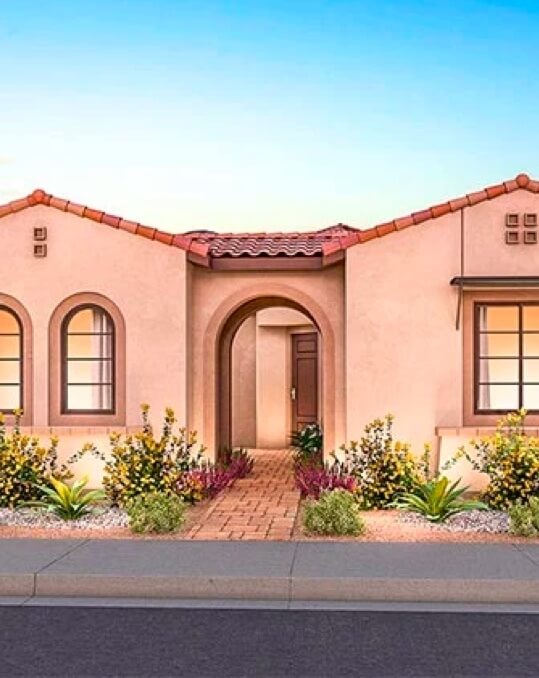Exploring 55+ communities can be an exciting step toward a new chapter filled with freedom, connection, and lifestyle upgrades. But for many active adults, the process of touring communities quickly becomes overwhelming. Between evaluating amenities, comparing home designs, and understanding financial obligations, it’s easy to lose track of the details that matter most.
To help streamline your search, we’ve created a comprehensive checklist covering everything from social calendars to HOA fees. Whether you’re just beginning your journey or narrowing down your final options, this guide will empower you to make informed decisions and find the perfect community for your next phase of life.
Community Atmosphere
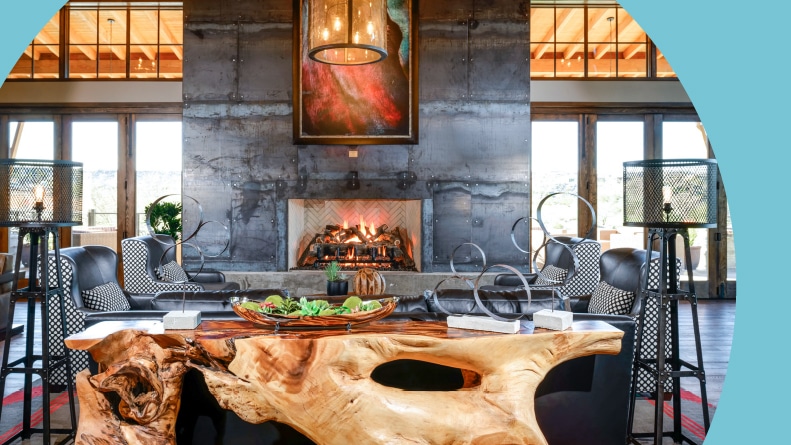
Like any state, city, or neighborhood, 55+ communities have unique atmospheres that encapsulate the overall lifestyle many residents experience. Here are a few suggestions of what to look for in a 55+ community in terms of its collective atmosphere.
Social Calendar
Most 55+ communities boast full social calendars, which provide ample opportunities for pursuing new hobbies, enjoying favorite pastimes, and meeting like-minded neighbors. Interested homebuyers should review the social calendar as an essential piece of what to look for in a 55+ community.
Cost and Location
Homebuyers should also consider how busy they want their social lives to be when choosing a community. Some communities may only have a few annual events, while other communities may have several activities planned for nearly every day of the year. Cost is another factor to contemplate, as some social events and clubs may encourage or require a financial contribution to participate.
Make sure to take note of the location of the activities, clubs, and classes listed on the social calendar. Communities with clubhouses, amenity complexes, or on-site town squares host most of their events within the neighborhood, while residents of smaller communities may need to travel outside of the community for some meet-ups or activities.
Clubs, Classes, and Activities
An abundance of different clubs, classes, and activities often fill the social calendars of 55+ communities, including sports, interest clubs, crafts, educational opportunities, parties, social gatherings, community outings, or even group trips. Some communities offer hundreds of unique clubs and interest groups for their residents to explore.
When considering a 55+ community, active adults should try to find out if there are already clubs or activities on the social calendar that interest them. If not, then it may be worth it to look into how easy it is to start a club. Many communities support and encourage the founding of new clubs and groups as long as certain parameters are met.
Are the residents retired?
Finding out more about the lifestyles of a community’s current residents may help active adults find the community that best suits their needs and preferences. One simple way to immediately find common ground with potential neighbors is to find out how many still work or how many are retired. Retirees may prefer living around other retirees so they can more easily acclimate to the atmosphere of the community.
Do residents live in the community year-round?
Many 55+ communities, especially those in the South, attract residents who only live there for certain months of the year. Retirees commonly called “snowbirds” travel to and live in the south during the winter months to avoid harsh, cold weather. Active adults searching for communities to live in year-round may want to find out whether their new neighbors will reside there for most or only part of the year.
Community Grounds
The community grounds make a significant contribution to the overall atmosphere of a 55+ community. Many age-restricted communities meticulously care for their landscaping and make portions of their grounds dedicated to parks and conservation areas. Active adults searching for a 55+ community should pay close attention to how well the grounds are maintained. Also, look for walking and biking trails to better enjoy these outdoor spaces.
Community Amenities
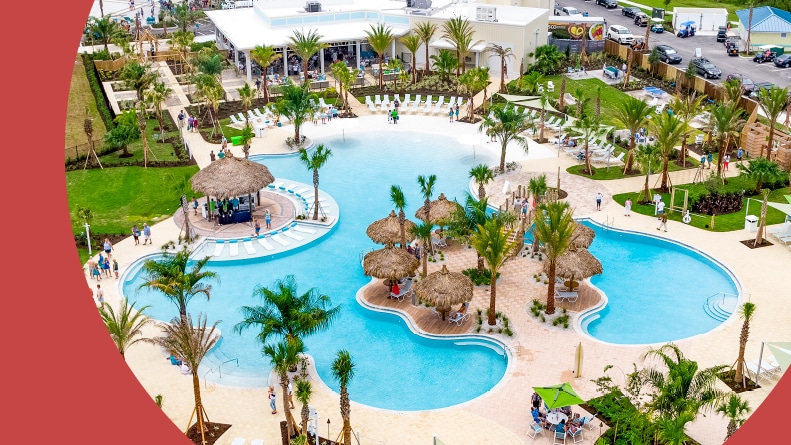
From spacious clubhouses to resort-style pools to pickleball courts, amenities often offer the most exciting benefits of life in a 55+ community. These shared facilities and services can even be the deciding factor, so it’s vital for homebuyers to carefully compare the range of amenities offered in each development.
Clubhouse
Most 55+ communities provide a clubhouse, which tends to serve as the central hub for social life and events. Clubhouses range greatly in size, but many include spaces like fitness centers, indoor pools, libraries, ballrooms, media rooms, restaurants, arts and crafts studios, and community kitchens.
Outdoor Amenities
For outdoor amenities, active adults can find communities with options such as multiple swimming pools, walking trails, parks, ponds and lakes, amphitheaters, community gardens, and barbecue areas. For those who like to stay active by playing sports, it’s common for communities to have athletic facilities like bocce ball, tennis, pickleball, shuffleboard, and basketball. Many communities feature championship golf courses, although memberships to the golf clubs may or may not be included with residency.
Some larger master-planned communities may have amenity complexes, town squares, or retail areas within the boundaries of the community. These areas can include everything from medical centers and shopping outlets to restaurants and movie theaters. Residents often use golf carts or community-wide transportation to travel throughout these communities.
A Lifestyle Director
Homebuyers should also consider whether a community employs a full-time lifestyle director. A lifestyle director is responsible for bringing life to a community by scheduling a thriving social calendar, hosting events, and bringing fun opportunities to the community. Residents can also bring new ideas for clubs and social gatherings to the lifestyle director so they can bring these shared interests to life.
With such a variety of options when it comes to amenities, active adults can often find several 55+ communities that cater to their interests.
Homeowners’ Association (HOA)
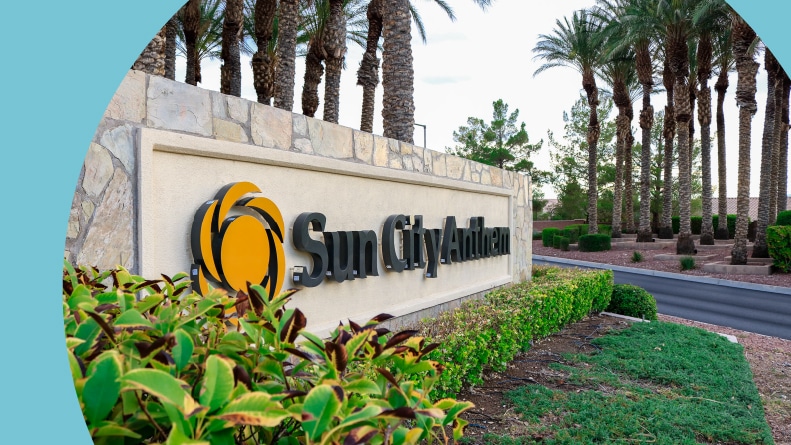
When keeping track of what to look for when touring a 55+ community, the homeowners’ association (HOA) is an important consideration. Most 55+ communities have HOAs funded by residents. While the role of the HOA can vary between communities, the most frequent responsibilities include maintaining community grounds and amenities, upholding and enforcing community guidelines and regulations, and responding to comments, questions, or concerns from residents.
HOA Fees
Active adult homebuyers should consider the cost of HOA fees and what these fees include. Various services covered by HOA fees may include exterior home maintenance, home landscaping, community grounds maintenance, amenities access, trash removal, snow removal, and sometimes cable and/or internet.
Interested homebuyers should also research the rules and regulations upheld by an HOA to make sure they would be willing to comply upon moving to the community. Some common rules include restrictions on visitors, rentals, and pets. There may be other surprising rules, so potential residents should thoroughly examine any HOA documents and guidelines.
HOAs also hold cash reserves for upcoming projects in the community. Active adults should be in the know about what such projects are on the horizon, such as roof replacements, clubhouse remodels, or the addition of new amenities.
Home Design
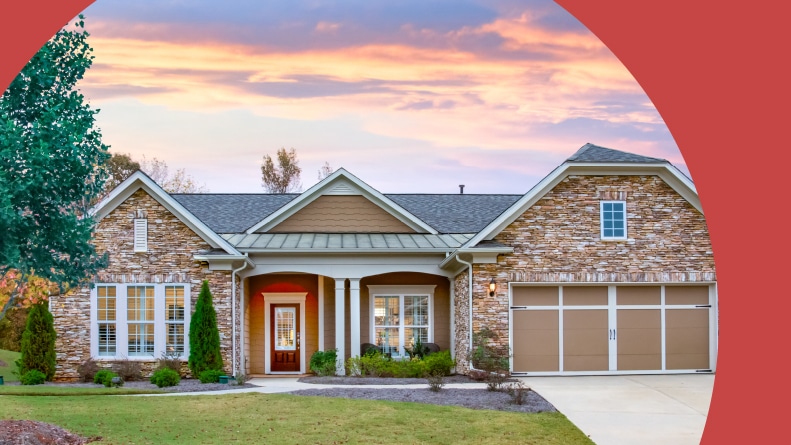
Different 55+ community builders offer unique home styles and floor plans. With such a diversity of home types, layouts, features, and architectural styles to choose from across the country, homebuyers can enjoy the process of discovering the builder that best meets their needs and preferences for their home.
Sizes and Square Footage
First, consider the sizes and square footage of different home options along with the size of the lot. Active adults should ask themselves what size home will best fit the lifestyle they want to live, rather than their current lifestyle. For many retirees, this means downsizing into a smaller home with less upkeep and fewer burdens. Think about whether hosting guests might be a common occurrence, and, if so, then look for homes with ample entertainment space both inside and out.
One-Level Living
Many active adults look for ranch-style homes that provide one-level living. Many two-story homes in 55+ communities enable residents to live on the main floor while incorporating second-story spaces for visitors and guests. Those who want main-floor living should look for homes with master bedrooms and laundry on the ground level to avoid continuous trips up and down stairs.
Community Layout
For homes on larger lots with abundant landscaping, homebuyers should clarify whether the HOA will be responsible for the yard’s maintenance or if it falls under the homeowner to maintain. Homebuyers should also notice the overall layout of residences within the community, including how much space separates each property.
Architectural Styles
In addition to practical considerations like square footage and number of bedrooms, homebuyers can explore different architectural styles of homes. Many 55+ communities tend to have a homogeneous style that reinforces the community atmosphere, such as Cape Cod-style homes in the East or beach-themed bungalows near the coast.
Floor Plans
Next, homebuyers should consider the individual floor plans of homes within a 55+ community. Many well-known 55+ community developers pride themselves on having a wide variety of floor plans to suit the preferences of homebuyers. For those wanting to build a new home, these developers will have a myriad of customization and expansion options, such as extended outdoor patios, fireplaces, extra flex rooms, and the like. Look for 55+ communities that stay up-to-date with green and smart home features to reduce energy costs and make life at home more convenient.
Surrounding Area
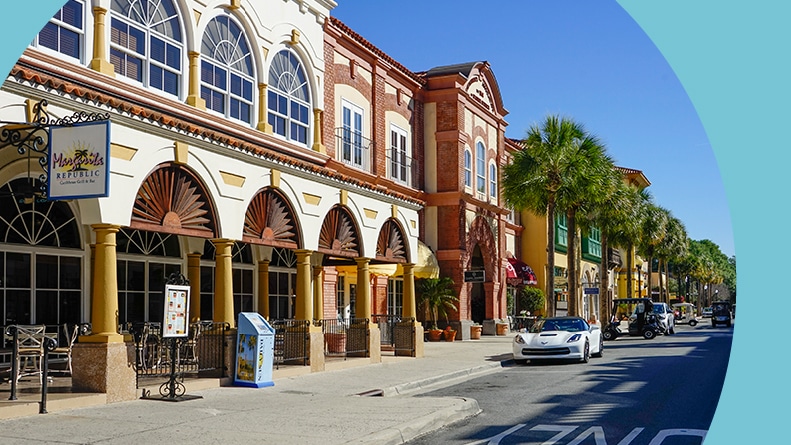
With hundreds of 55+ communities to choose from across the nation, many active adults narrow their search to a particular geographic area. The nearby area that surrounds a community is just as important. While many communities offer plenty of conveniences and things to do within the boundaries of the neighborhood, residents also spend much of their time outside of the community exploring the surrounding area.
Homebuyers should ask themselves whether they want to move to a community that’s close to a major city, in a more rural setting, or somewhere that’s in between. Communities closer to big cities may have more restaurants, entertainment, and conveniences nearby, while those in the country will offer peace, seclusion, and less traffic.
There are a few local amenities that should be nearby to any 55+ community, including hospitals, pharmacies, grocery stores, and shopping centers. Consider investigating the local transportation options available to residents besides cars. While some 55+ communities may offer community transportation like buses and trams, active adults may benefit from public transportation, trains, bike shares, or other options.
55+ Homebuying Finance Questions

Some 55+ communities may have financial requirements to live in their community, and potential homebuyers need to fully understand these restrictions and regulations. Retirees should consult trusted financial professionals to prepare their finances and meet any qualifications set forward in the 55+ homebuying process.
HOA
In addition to monthly or annual HOA fees, new residents of a 55+ community may need to meet other financial requirements to appease the homeowners’ association. HOAs may request a Capital Improvement or Investment Fee, a one-time lump sum payment to the HOA upon the purchase of a home. Some HOAs may also require a minimum reserve, or a minimum amount in the purchaser’s bank account, to qualify to buy a home.
Active adults should also understand that HOA fees can change and may face an annual increase. HOAs raise their fees for many reasons, including to adjust for inflation or to increase their budget for projects and improvements. Homebuyers should ask questions about how much HOA fees increase each year and the purpose behind those increases to ensure they reflect a fair amount.
Homeownership Costs
Some exclusive age-restricted communities call for homeowners to meet certain requirements to purchase a residence. These may include additional fees or special financial requirements. Homebuyers should research and prepare for these expenses before committing to a particular community or home.
Keep in mind any special services or memberships homeowners need to purchase to live in a 55+ community. For example, some communities with golf courses or adjacent to private courses require residents to secure memberships.
55places.com Makes Touring 55+ Communities Easy!
Choosing the right 55+ community involves more than just loving the homes—it’s about finding a lifestyle that aligns with your goals, interests, and daily needs. Ready to start your search? Download our free checklist as your guide, and when you’re ready to take the next step, contact 55places.com to connect with experienced real estate professionals who can help make your ideal retirement a reality!







